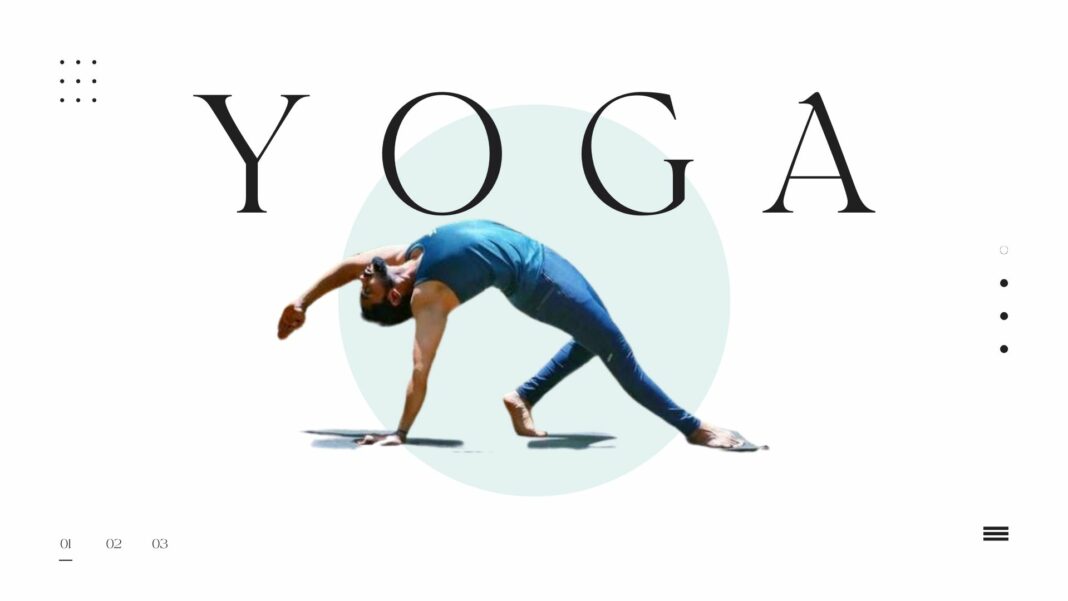Are you seeking a way to boost your physical fitness, enhance mental clarity, and reduce stress in your daily life? If you’ve been pondering the best time to delve into the transformative world of yoga, you’re not alone. Many individuals, just like you, are exploring the advantages of yoga practice at different times of the day.
Whether you’re a morning person looking to kickstart your day with vitality, an evening enthusiast craving relaxation, or a night owl seeking to unwind before bedtime, the timing of your yoga practice matters.
In this guide, we’ll unravel the optimal moments for yoga, giving you insights into the benefits of each timing slot and helping you discover the ideal rhythm for your personal journey toward well-being. So, let’s embark on this enlightening journey and find the perfect time to say, “Namaste” to a healthier you!

Morning Yoga
Advantages:
- Stretching and Loosening Muscles: Morning yoga is akin to a gentle awakening for your body. After a night’s rest, your muscles might feel a bit stiff or tense. Morning yoga helps counteract this by stretching and loosening muscles, leaving you feeling more limber and ready to take on the day.
- Boosting Energy Levels and Concentration: A well-structured morning yoga routine can serve as a natural caffeine-free energy booster. It stimulates blood flow, oxygenates the body, and jumpstarts your metabolism, resulting in increased alertness and improved concentration throughout the day.
Disadvantages:
- Morning Exercise Challenges: Early mornings can be challenging for some individuals. The thought of getting out of bed before sunrise might deter those who aren’t early birds by nature.
- Precautions Regarding Eating: Morning yoga should ideally be practiced on an empty stomach to prevent discomfort and digestive issues. It’s essential to plan your morning routine to allow for this fasting period.
Morning yoga can be especially beneficial for those who prefer to seize the day with an energized and focused mindset. However, it may not suit everyone’s lifestyle and body clock.
Evening Yoga
Advantages:
- Relieving Tension and Stress: Evening yoga serves as an excellent stress reliever. It allows you to unwind and release the physical and mental tension accumulated throughout the day. The practice of deep breathing and stretching can create a sense of calm and relaxation.
- Enhancing Sleep Quality: Practicing yoga in the evening can improve the quality of your sleep. The relaxation techniques employed in evening yoga can ease you into a restful slumber, ensuring a more refreshing and rejuvenating rest.
Disadvantages:
- Fatigue After a Long Day: After a full day of work or activities, you might feel physically tired, making it challenging to motivate yourself for an evening yoga session.
- Timing Considerations Related to Dinner: It’s crucial to avoid practicing yoga immediately after a heavy dinner, as this can lead to discomfort and hinder your practice. Finding the right time between your last meal and your evening yoga session is essential.
Evening yoga is an excellent choice for individuals who seek solace and stress relief at the end of their hectic day. It offers an opportunity to unwind, release tension, and prepare the mind and body for a peaceful night’s sleep.
Night Yoga
Night yoga, often practiced closer to bedtime, offers unique benefits that cater to individuals who find solace in the stillness of the night:
- Preparing the Body and Mind for Sleep: Night yoga serves as a tranquil bridge between the busyness of the day and the restorative stillness of the night. It helps calm the mind, slow down racing thoughts, and prepare the body for a peaceful and restful sleep.
- Detoxification and Relaxation Benefits: As the day winds down, night yoga can aid in detoxifying the body and promoting relaxation. It encourages the release of built-up tension and stress, leaving you feeling more serene and ready for sleep.
The practice of night yoga is particularly suited for those who appreciate the meditative and calming qualities of yoga. It provides a soothing conclusion to the day and supports a night of deep and rejuvenating sleep.
When to Practice Yoga?

The timing of your yoga practice should ideally align with your unique preferences and daily schedule. Here are some considerations:
- Individuality of Choosing the Right Time: Understand that there’s no one-size-fits-all answer when it comes to yoga timing. It varies from person to person based on their energy levels, daily routines, and personal preferences.
- Flexibility of Yoga Practice: Yoga’s adaptability allows you to practice at any time of day, which means you can adjust your routine to suit your needs. Yoga is not rigidly bound to specific hours; it can be tailored to your schedule.
- Determining the Ideal Practice Time: To find your optimal practice time, consider your energy levels, work or study commitments, and other daily activities. Experiment with different times to discover what feels most comfortable and effective for you.
The key takeaway is that the best time to practice yoga is the time that aligns with your unique lifestyle and needs. Whether it’s morning, evening, or night, the benefits of yoga are accessible at any time.
When Do We Celebrate Yoga Day?
Understanding the significance of International Yoga Day, celebrated annually on June 21st, adds a broader context to your yoga journey:
- Significance of International Yoga Day: International Yoga Day is a global celebration that highlights the universal appeal of yoga. It’s a day to recognize the practice’s physical, mental, and spiritual benefits and promote its inclusivity.
- Incorporating Yoga into Daily Life: Yoga Day serves as a reminder that yoga is not just a physical activity but a way of life. Encourage readers to incorporate yoga into their daily routines, not just on this special day but throughout the year.
By acknowledging International Yoga Day, you join a global community that recognizes the transformative power of yoga in improving overall well-being.
How Often Should I Practice Yoga?
Determining the frequency of your yoga practice is essential for creating a sustainable routine:
- Frequency Recommendations: While the ideal frequency of yoga practice varies from person to person, aiming for 3-5 times a week is generally recommended for noticeable benefits.
- The Significance of Consistency: Consistency is key to reaping the rewards of yoga. Even if you can only commit to practicing once a week, maintaining that consistency can lead to improvements in physical fitness and mental well-being.
- Benefits of Even Minimal Practice: It’s essential to highlight that even minimal yoga practice, such as a weekly session, can yield positive results. The key is to find a routine that you can realistically stick to.
Determining your practice frequency depends on your goals, schedule, and personal preferences. Consistency, even in small doses, can lead to profound changes in your well-being over time.
Benefits of Yoga Practice
Understanding the numerous benefits of yoga practice can motivate individuals to embrace it as a daily ritual:
- Physical Benefits: Yoga enhances flexibility, strengthens muscles, improves endurance, and increases range of motion. Regular practice can lead to better posture and balance.
- Mental and Emotional Benefits: Yoga reduces stress, anxiety, and depression by promoting relaxation and mindfulness. It enhances mental clarity and boosts emotional well-being.
- Improved Sleep Quality: Consistent yoga practice is linked to better sleep patterns and the ability to fall asleep more easily and experience deeper rest.
- Digestive and Circulatory Health: Yoga can aid in digestion and circulation, leading to better nutrient absorption and overall gut health.
- Enhanced Concentration: Practicing mindfulness in yoga sessions can improve focus and concentration, benefiting work and daily activities.
Understanding these benefits underscores the value of incorporating yoga into daily life. It offers a holistic approach to well-being that goes beyond physical fitness.
Different Types of Yoga

Yoga is a diverse and multifaceted practice that encompasses various styles and approaches, each with its own unique characteristics and benefits. Here are some of the different types of yoga:
- Hatha Yoga: Hatha is a gentle introduction to the most basic yoga postures. It’s a great place to start for beginners.
- Vinyasa Yoga: Vinyasa is a dynamic style of yoga that links breath with movement. It’s often called “flow yoga” because of the smooth way the poses run together.
- Ashtanga Yoga: Ashtanga is a rigorous style of yoga that follows a specific sequence of postures and is similar to vinyasa yoga but faster-paced.
- Iyengar Yoga: This form of yoga focuses on precise alignment and the use of props like belts, blocks, and wall ropes to perform postures with perfect alignment.
- Bikram Yoga: Also known as hot yoga, Bikram yoga is practiced in a room heated to a high temperature to promote sweating and flexibility.
- Kundalini Yoga: Kundalini yoga combines postures, breathing exercises, and the chanting of mantras to awaken and release the energy at the base of the spine (kundalini energy).
- Yin Yoga: Yin yoga involves holding passive postures for an extended period, often with the aid of props, to target the connective tissues in the body and improve flexibility.
- Restorative Yoga: Restorative yoga is a deeply relaxing practice that uses props to support the body in gentle, restful poses for extended periods.
- Power Yoga: Power yoga is a fitness-based approach to vinyasa yoga, emphasizing strength and endurance through a faster, high-intensity practice.
- Anusara Yoga: Anusara yoga emphasizes alignment, heart-opening poses, and a celebration of the heart’s spiritual aspects.
- Sivananda Yoga: Sivananda yoga follows a set structure of 12 basic poses and is focused on proper breathing, relaxation, and a vegetarian lifestyle.
- Jivamukti Yoga: Jivamukti yoga incorporates spiritual teachings, music, and meditation into a physically challenging vinyasa practice.
- AcroYoga: AcroYoga combines yoga and acrobatics, involving partners who work together to perform balancing and acrobatic poses.
- Aerial Yoga: Aerial yoga uses a silk hammock or sling suspended from the ceiling to aid in yoga postures, allowing for greater flexibility and inversion poses.
- Prenatal Yoga: Prenatal yoga is designed for pregnant women and focuses on poses and breathing techniques that help alleviate discomfort and prepare for childbirth.
- Chair Yoga: Chair yoga is a gentle form of yoga practiced while sitting on a chair or using a chair for support, making it accessible for those with mobility issues.
- Laughter Yoga: Laughter yoga combines laughter exercises and yogic breathing techniques to promote well-being and reduce stress.
- Kripalu Yoga: Kripalu yoga emphasizes self-awareness, self-acceptance, and a gentle approach to postures and mindfulness.
Each type of yoga has its unique characteristics, making it essential for individuals to explore and choose the one that resonates with their goals and preferences.
Yoga for Specific Goals
Recognizing that yoga can be tailored to address specific objectives encourages individuals to explore its versatility:
- Weight Management: Yoga can aid weight management by reducing stress-related overeating, improving metabolism, and promoting mindfulness around eating.
- Stress Reduction: For those seeking stress reduction, practices like restorative yoga, mindfulness meditation, and deep breathing techniques can be highly effective.
- Flexibility and Mobility: Individuals looking to enhance flexibility and mobility can opt for styles like Vinyasa or Yin yoga, which emphasize stretching and deep poses.
- Mental Health: Yoga can serve as a valuable tool in managing mental health conditions such as anxiety and depression through its mindfulness and relaxation aspects.
Recognizing that yoga can be tailored to meet specific goals underscores its adaptability and inclusivity.
Practical Considerations
Practical considerations related to yoga practice encompass crucial aspects to ensure a safe and effective experience:
- Timing of Meals: It’s important to time your meals properly, particularly for morning yoga. Practicing on an empty stomach can prevent discomfort and aid digestion.
- Optimal Practice Environment: Creating a suitable practice space at home or choosing the right yoga class can enhance your overall experience.
- Hydration: Staying adequately hydrated is essential for an effective yoga practice. Dehydration can lead to muscle cramps and reduced flexibility.
Addressing these practical considerations can significantly enhance the quality and safety of your yoga practice.
Can Women Do Yoga During Their Periods?
This question often arises for women who practice yoga regularly. It’s important to address this topic to provide guidance and reassurance:
- Beneficial During Menstruation: Yoga can be highly beneficial during menstruation. Gentle yoga poses can alleviate menstrual discomfort, reduce cramps, and provide a sense of relaxation.
- Adaptation is Key: It’s essential to adapt your practice during menstruation. Avoiding strenuous poses and opting for restorative and gentle postures is recommended.
- Listen to Your Body: The most crucial aspect during menstruation is to listen to your body. If you feel fatigued or experience discomfort, it’s perfectly acceptable to take it easy or skip the practice for that day.
Understanding that yoga can be adapted to accommodate menstruation empowers women to continue their practice while respecting their bodies’ needs.
What Happens to Your Body and Mind if You Do Yoga Every Day?
The idea of daily yoga practice often sparks curiosity. It’s beneficial to explore the potential outcomes of consistent daily practice:
- Physical Transformation: Daily yoga can lead to remarkable physical transformations, including increased flexibility, muscle tone, and overall fitness.
- Mental Clarity: Regular practice fosters mental clarity and mindfulness, allowing individuals to better manage stress and anxiety.
- Emotional Balance: Daily yoga helps balance emotions, reducing mood swings and promoting a sense of inner calm.
- Enhanced Well-Being: Many individuals report improved overall well-being and a heightened sense of inner peace with daily yoga practice.
Understanding the potential positive impacts of daily yoga practice can motivate individuals to commit to a regular routine.
Is It Better to Do Yoga at Home or in a Class?
Choosing between practicing yoga at home or attending classes is a common dilemma. Exploring the pros and cons of each option can help individuals make an informed decision:
Practicing Yoga at Home:
- Convenience: Home practice offers flexibility in choosing when and where to practice, making it suitable for busy schedules.
- Comfort: Practicing in a familiar environment can enhance comfort and reduce self-consciousness.
- Personalized Practice: Home practice allows you to tailor your routine to your specific needs and preferences.
Attending Yoga Classes:
- Guidance: Classes provide expert guidance from certified instructors, ensuring proper alignment and technique.
- Community: Classes foster a sense of community and connection with fellow practitioners.
- Variety: Classes offer a diverse range of styles and experiences that you may not explore on your own.
The choice between home practice and classes depends on individual preferences, goals, and lifestyle. Some may prefer the structure of classes, while others may relish the autonomy of practicing at home.
Can I Do Yoga After Eating?
This is a common question, especially for those balancing meal times and yoga practice:
- Timing Matters: Ideally, yoga should not be practiced immediately after a heavy meal. Digestion can be hindered, leading to discomfort during the practice.
- Allow Time: It’s advisable to wait at least 2-3 hours after a substantial meal before engaging in yoga. Light snacks, on the other hand, can be consumed about 30 minutes before practice.
- Hydration is Key: Staying hydrated is essential during yoga practice, but excessive water consumption right before or during practice may lead to discomfort. It’s best to maintain adequate hydration throughout the day.
Understanding the importance of meal timing can help practitioners avoid discomfort and maximize the benefits of their yoga practice.
How Long Should I Do Yoga?
The duration of a yoga session can vary widely, and understanding the optimal session length is essential:
- Flexibility: Yoga sessions can range from quick 15-minute routines to more extended practices lasting 60 minutes or more. The right duration depends on individual goals and available time.
- Consistency Over Duration: Consistency often trumps duration. Regular, shorter practices can be just as effective as longer ones, provided they are done consistently.
- Mindful Practice: It’s crucial to prioritize the quality of your practice over its duration. A focused, mindful practice for a shorter time can yield substantial benefits.
Understanding that the length of your practice can be tailored to your schedule and goals encourages more people to incorporate yoga into their daily routines.
Conclusion
Yoga is a versatile and holistic practice that offers numerous benefits for physical, mental, and emotional well-being. The best time to practice yoga varies from person to person, allowing individuals to choose a time that aligns with their schedules and preferences. Morning yoga can invigorate the day, while evening and night yoga promote relaxation and restful sleep.
International Yoga Day, celebrated on June 21st, emphasizes the global significance of yoga in promoting overall health and well-being. Yoga can be adapted to suit various goals, including weight management, stress reduction, and mental clarity, making it accessible to people of all ages and fitness levels.
Understanding practical considerations like meal timing, hydration, and the choice between practicing at home or attending classes ensures a safe and effective yoga experience. Moreover, yoga can be adapted for menstruating individuals, offering relief from cramps and promoting relaxation.
Daily yoga practice can lead to transformative changes, both physically and mentally. Whether you choose a brief daily session or longer practices a few times a week, consistency is key to experiencing the full benefits of yoga.
Ultimately, the best time to start your yoga journey is when it feels right for you. Whether you’re seeking physical fitness, stress reduction, or a sense of inner peace, yoga offers a path to improved overall well-being. So, find a time that suits you, embrace the practice, and embark on a journey toward a healthier, balanced life through yoga.
FAQs about Yoga
Can I practice yoga on an empty stomach?
Yoga can be practiced on an empty stomach, but it's essential to listen to your body. Light snacks or meals about 30 minutes before practice can provide energy without causing discomfort. Avoid heavy meals immediately before yoga.
How often should I practice yoga?
Ideally, practicing yoga 3-5 times per week can yield significant benefits. However, even practicing once a week can improve your overall health and well-being. Consistency is key.
What are the benefits of practicing yoga daily?
Daily yoga practice can lead to improved flexibility, strength, mental clarity, and emotional balance. It can also reduce stress, anxiety, and depression, promoting overall well-being.
Can women practice yoga during their periods?
Yes, women can practice yoga during their periods. Gentle yoga poses can help alleviate menstrual discomfort and reduce cramps. It's essential to adapt the practice to your comfort level and listen to your body.
Is it better to practice yoga at home or attend classes?
The choice between practicing at home or attending classes depends on personal preferences. Home practice offers convenience and flexibility, while classes provide expert guidance and a sense of community. It's a matter of what suits your lifestyle and goals best.
How long should a yoga session be?
The duration of a yoga session can vary widely. It can range from a quick 15-minute routine to a more extended practice lasting 60 minutes or more. The key is consistency, so choose a length that aligns with your schedule and goals.
What type of yoga is best for beginners?
Hatha yoga is often recommended for beginners due to its gentle and basic approach. It focuses on foundational postures and breathing techniques, making it accessible to those new to yoga.
What happens on International Yoga Day, and when is it celebrated?
International Yoga Day is celebrated on June 21st each year. It's a global event that promotes yoga's holistic benefits. On this day, people participate in yoga classes, workshops, and events to raise awareness about yoga's positive impact on physical and mental well-being.
Can yoga help with weight loss?
Yoga can support weight loss by reducing stress-related overeating, improving metabolism, and promoting mindfulness around eating. While it may not lead to rapid weight loss like intense cardio workouts, it contributes to a healthier lifestyle.

Meet Pradeep Singh, your go-to guide for all things fitness, health, and motivation. With over 7 years in the field, Pradeep brings a blend of expertise and real-world experience to his writing. From workout tips to healthy living insights, he simplifies complex topics, making fitness accessible for everyone. His authentic approach and genuine passion aim to inspire and support your wellness journey. Get ready to embark on a path to a healthier lifestyle with Pradeep as your trusted companion and motivator.





















